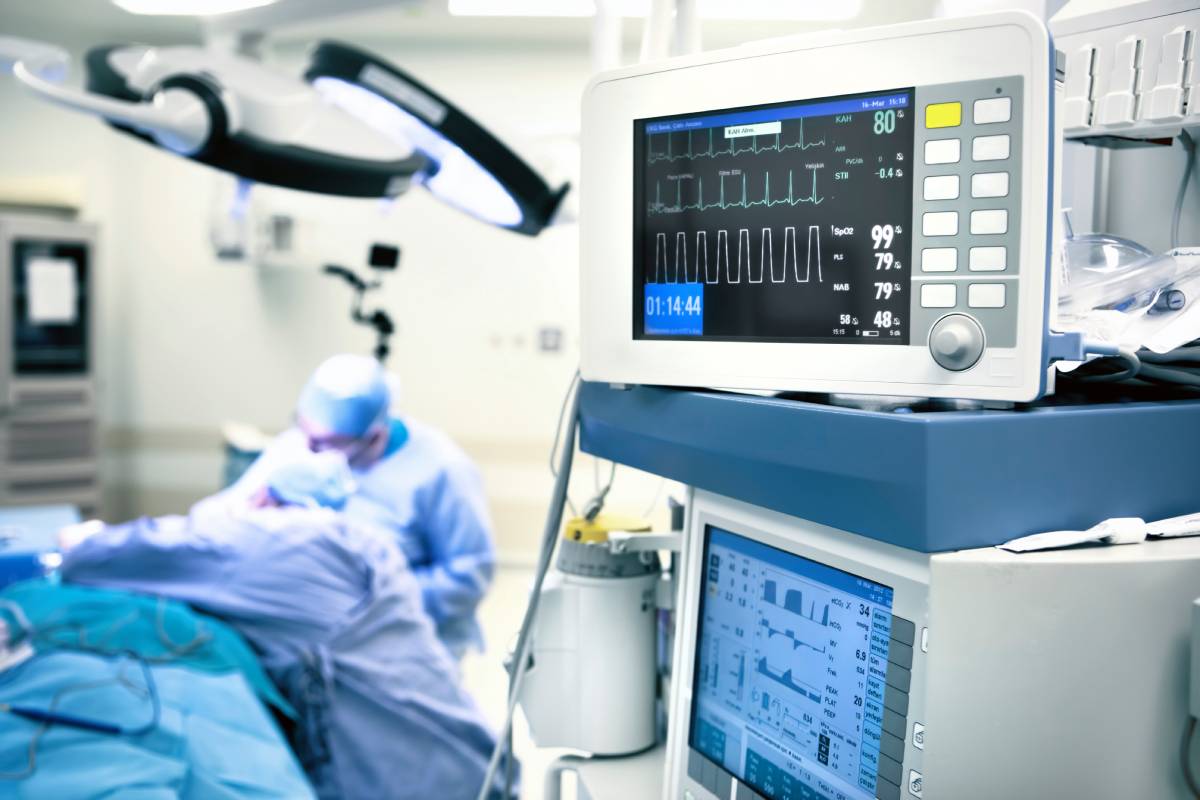
Each year, an estimated 230 million surgical operations are performed around the world. The influence of hemodynamic instability (or shock) during surgery on patient mortality and morbidity in is a very important clinical issue (1). There are four major categories of hemodynamic instability/shock: hypovolemic, distributive, cardiogenic, and obstructive. Hypovolemic shock is due to intravascular volume loss, distributive shock is caused by inadequate perfusion of the body’s vital organs, cardiogenic shock is secondary to decreased intrinsic cardiac function, and obstructive shock arises from a blockage of systemic blood circulation (2). Two surgical procedures that are associated with a greater chance of intraoperative hemodynamic instability are pheochromocytoma removal and carotid artery stenting. Although surgery techniques and anesthetic care have progressed considerably in recent years, hemodynamic instability (HI) is still a common complication of the aforementioned procedures, and can also happen in other clinical situations, though rare. Thus, identifying significant risk factors for hemodynamic instability in patients is important for safe and effective perioperative care by anesthesiologists and surgeons.
A pheochromocytoma is a rare neuroendocrine tumor that originates from chromaffin cells of the adrenal medulla, with an incidence of approximately 0.3-0.5 cases per 100,000 person-years. Often, pheochromocytomas synthesize and secrete excessive amounts of catecholamines (norepinephrine, epinephrine and dopamine), which can cause hypertension, tachycardia, palpitations, and various organ complications. The main treatment strategy for pheochromocytoma is surgery (adrenalectomy). However, manipulation of the adrenal gland can trigger acute life-threatening intraoperative catecholamine release and a subsequent hypertensive crisis. According to current guidelines, patients with pheochromocytoma should undergo preoperative medical treatment consisting of α- and β-adrenergic blockers to prevent perioperative cardiovascular complications (3). In 2018, Jiang et al. conducted a study to identify risk factors for hemodynamic instability during surgery for pheochromocytoma in patients at a single institution in China (3). In this study, it was found that tumor diameter > 50 mm was an independent risk factor for intraoperative HI. Previous studies have shown that larger tumors tend to secrete greater amounts of catecholamines, which would naturally lead to an increase of intraoperative HI. The study also showed that diabetes/hyperglycemia was also a significant predictor of HI. Autonomic neuropathy and HI are known complications of uncontrolled diabetes. This existing predisposition to HI is exacerbated by the catecholamine surge produced during pheochromocytoma removal (3).
Carotid artery stenting (CAS) is an alternative to carotid endarterectomy (CEA) to treat carotid artery disease, with proven safety and efficacy in multiple trials due to its less invasive nature compared to CEA. According to the current guidelines, CAS is preferred for patients with contraindications against CEA (i.e. age >80, severe cardiac disease, previous radical neck surgery or radiotherapy) (4). Hemodynamic instability is also considered a common complication in surgery patients after CAS. In a 2019 study, Rubio et. al found that lesions involving the carotid bifurcation and the presence of hypertension requiring 2 or more antihypertensive medications were independent risk factors for perioperative HI (4). Stimulation
of the carotid sinus baroreceptors by balloon dilation and stent deployment at or near the carotid bifurcation can lead to increased vagal tone and parasympathetic, consequently causing hypotension and/or bradycardia. On a related note, the association between the presence of severe hypertension and perioperative HI suggests that patients with more refractory hypertension requiring multiple medications may be at increased risk for reflex hypotension following CAS. Future studies are required to investigate whether withholding some or all antihypertensive medications in patients on multiple medications reduces the risk of perioperative HI (4).
References
1. Abebe MM, Arefayne NR, Temesgen MM, Admass BA. Incidence and predictive factors associated with hemodynamic instability among adult surgical patients in the post-anesthesia care unit, 2021: A prospective follow up study. Ann Med Surg (Lond). 2022;74:103321. Published 2022 Jan 29. doi:10.1016/j.amsu.2022.103321
2. Standl T, Annecke T, Cascorbi I, Heller AR, Sabashnikov A, Teske W. The Nomenclature, Definition and Distinction of Types of Shock. Dtsch Arztebl Int. 2018;115(45):757-768. doi:10.3238/arztebl.2018.0757
3. Jiang M, Ding H, Liang Y, et al. Preoperative risk factors for haemodynamic instability during pheochromocytoma surgery in Chinese patients. Clin Endocrinol (Oxf). 2018;88(3):498-505. doi:10.1111/cen.13544
4. Rubio G, Karwowski JK, DeAmorim H, Goldstein LJ, Bornak A. Predicting Factors Associated with Postoperative Hypotension following Carotid Artery Stenting. Ann Vasc Surg. 2019;54:193-199. doi:10.1016/j.avsg.2018.06.005

